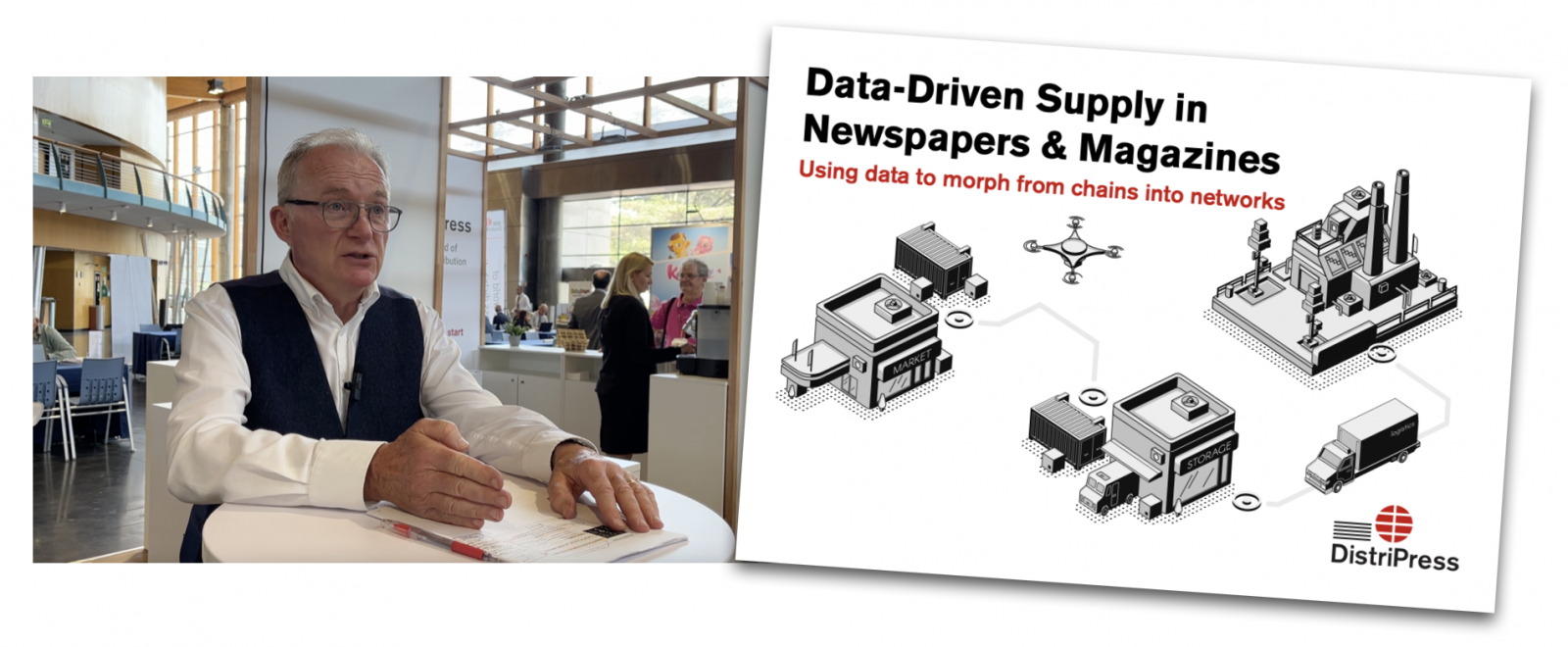Linear supply chains no longer exist… welcome to the global distribution network!
The global distribution network came together at the 66th DistriPress Congress in Estoril, Portugal this week, and FIPP was on hand to get the inside track. Analysing exactly how and why media is circulated in the way that it is today – both print and digital – can help not only in the creation of successful distribution strategies, but also in our wider understanding of how the global media industry at large currently functions.
Against the sunlit backdrop of the Iberian Peninsula, five key themes from the event shone out, both on and offstage…
1. Linear supply chains no longer exist…
… And perhaps they never did – it’s just that in 2022, our interpretation of the process of circulation more accurately represents how the global media industry actually functions.
In the run-up to the event, Wessenden Marketing’s Jim Bilton published a report analysing how a recent flood of data into the distribution sector was helping to morph traditional supply chains into networks. I caught up with Jim at the event, where he was moderating several of the opening forum sessions, to find out more:
“I think that the old days of there being an end-to-end supply chain,” said Bilton, “that you have a product up at the front and you just chug through all of the different stages down to a retailer, is a thing of the past.”

“It’s been dislocated by subscriptions, which are increasingly important alongside retail. But moving things along, the middle-men in this process – the distributors, the wholesalers – they understand how the product works, they understand the consumer, and so they can drop into different platforms.”
“Some of them are dropping into digital editions, with their own newsstands that are consumer facing. Some of them are dropping into geographically defined areas, whether that’s an airport or an airline, a train, a hotel. So I think the old, clear definitions of who does what, passing on along from one link to another, is evaporating.”
2. Collaboration is key
Of course, the shift from spectrum to continuum – by its very nature – requires a collaborative approach. And in examining this newly circled square that our modern-day distribution process, we were given a fascinating example by Alan Centofante, CEO of Discover Rockets.
The company, which brings ‘science to the art of cover design’, works with leading media organisations such as Barnes & Noble, to give direct feedback on what magazine covers are selling and why. This allows editorial teams to make more educated decisions on exactly what to adorn their covers with, in order to increase circulation.
Koen Maes of Mediahuis, emphasised the importance of creating a collaborative human process alongside some of the more integrated media technologies that we have at our disposal today.
“It’s not really about taking more facets in-house, but less,” he told me. “We are always looking to connect people, and to discover where new companies and individuals can fit into the process, and how we can connect them.”
One area in which we are all well aware that we need to work collaboratively right now is climate change, and the media industry is helping to lead the charge when it comes to tackling CO2 emissions.
“We see increasingly in official tenders that sustainability is moving further and further up the agenda.”
Alongside publishing its own titles, the Roularta Media Group in Belgium has its own printing arm to service third-party clients, and provides direct data in this area:
“We know that we can reduce the carbon footprint of our customers,” said Steve Renders, General Manager for Roularta Printing, “because now we are able to measure the carbon footprint for every single print we do. So we have a software system that can determine the carbon footprint of a printing job, and we can help our customers to make that printing job, let’s say CO2 neutral.”
“This is in fact a key USP in the consideration of using our service. We see increasingly in official tenders that sustainability is moving further and further up the agenda. It was perhaps in the past a little bit of an afterthought, but now it is well and truly in the mix. It’s price, it’s reliability, but it’s also about efforts on sustainability.”
3. Indie leads the way
Another fascinating trend in the industry right now, is the growing popularity of independent print titles. Where digital once led the way in terms of blogs, forums, and niches, we find that indie print is now the talk of the town, as mainstream publishers look to the fringes for fresh ideas.
And who better to introduce us to this concept than MagCulture’s Jeremy Leslie, who I also caught up with in Estoril:
“People ask: how are people going to make money off the indies? And for a lot of people, that’s not the issue, it’s not about how it’s going to work as a business. Making a magazine is an activity for the sake of itself. Some of the more esoteric and experimental projects, you can compare to experimental filmmaking or music – it’s people pushing the edge of the envelope of what can be done with a magazine, and that’s what’s so exciting about it!
“Every now and then, one actually pushes through and becomes a phenomenon in a business sense as well and becomes a success.”
“But even if it doesn’t, one of the really critical issues in the industry right now, is that it’s very hard for people to get apprenticeships or just to start at the bottom of the rung and work their way up. And in a way the indie scene is providing that opportunity for people to learn their craft, learn their trade… and in turn it’s not just that mainstream publications are being influenced by the indies, it’s that the people who make the indies are being drafted into the mainstream.”
4. Physical diversification today is as – if not more – exciting than digital
If you thought the diversification of content in our industry was interesting (and it is!) then the innovations going on logistics side right now may just blow your mind! One of the most interesting stories to emanate from DistriPress Congress was that of Melo Group, who within the last two decades have experienced monumental change…
“When it comes to the wholesale part of Melo Group, we knew fifteen years ago that the pure media distribution side of our industry was likely to decline,” Thomas Riehn, Director of the Aviation Services Division at Melo Group told me.
“And so at that point, we started examining other areas that our unique services and skillsets could diversify into. We started with parcel services, and pick and pack services in the aviation industry. Out of that we became a caterer for the airline industry, and we get 500 cars driving each day and delivering parcels all over Germany.”
“Most of this was organic growth, where our customers approached us and said ok is it possible to provide any additional services besides what you did in the past?”

5. Sometimes we must come full circle to find the truth
If you got that subhead reference, then it’s literally eleven points out of ten for you, because it’s an obscure quote from a 1995 episode of the X-Files! But one of the key insights provided by this year’s DistriPress Congress – for me at least – was a tangible visualisation of today’s global media network in action.
Where hierarchal states once controlled the flow of information throughout the populations within them, the advent of the free press democratised access to information – and truth – for all. In more recent decades society has shifted even further still, from an emphasis on centralised hubs to the cult of the individual.
Today’s social and mobile technologies mean that we are all immediately connected to a universal global network, with each and every one of us a content creator within our own right.
Through non-linear supply chains, collaboration, diversification, and a renewed interest in bringing previously underrepresented voices into the mainstream, the global media network is once again evolving, in both print and digital, to reflect – and reshape – the society it serves.









